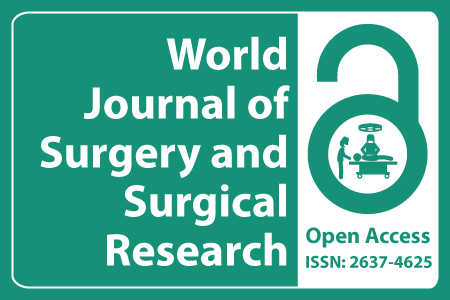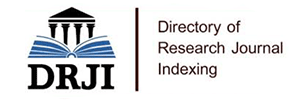
Journal Basic Info
- Impact Factor: 1.989**
- H-Index: 6
- ISSN: 2637-4625
- DOI: 10.25107/2637-4625
Major Scope
- Colorectal Surgery
- Emergency Surgery
- Hepatology
- Plastic Surgery
- Gastroenterological Surgery
- Orthopaedic Surgery
- Reconstructive Surgery
- Anesthesiology
Abstract
Citation: World J Surg Surg Res. 2023;6(1):1438.DOI: 10.25107/2637-4625.1438
Preoperative Radiological Evaluation of Visceral Obesity: A Potential Tool for the Prediction of Anastomotic Leak after Laparoscopic Resection for Rectal Cancer
Frigault J, Lemieux S, Beland A , Brière R , Cournoyers-Rodrigue J and Drolet S
Department of Surgery, Centre Hospitalier Universitaire de Quebec-Université Laval, Canada Department of Radiology and Nuclear Medicine, CHU de Quebec-Laval University, Canada
*Correspondance to: Jonathan Frigault
PDF Full Text Research Article | Open Access
Abstract:
Background: Visceral obesity has been evaluated as a predictive factor for the surgical difficulty of laparoscopic total mesorectal excision of rectal cancer, with conflicting results. Few reports have assessed this concept in a Western population, with a higher prevalence of obesity. Objective: This retrospective cohort study evaluated the impact of visceral obesity on surgical difficulty and postoperative oncological outcomes. All patients from 2003 through 2014 who had laparoscopic lower anterior rectal cancer resection were included. Incidence of anastomotic leak 90 days post-surgery, operative time, completeness of resection, and locoregional recurrence were the outcomes evaluated. Results: Among the 139 patients included in our analysis, mean BMI was 27.4 ± 5.2 kg/m2 . Anastomotic leaks were observed in 24 patients (17%). Successful surgical resection was achieved in 87% of patients (94/108). After a median follow-up of 73.6 months (interquartile range 51.9; 96.3), 12 patients (9%) experienced locoregional recurrences. The 5-year overall survival was 81% (103/127). Total Fat Area (TFA) (odds ratio 1.007, 95% CI 1.001-1.014, p=0.006) and Mesorectal Area (MA) (odds ratio1.063, 95% CI 1.004-1.125, p=0.028) were associated with an increased risk of anastomotic leak in multivariate analysis. Three radiological measures were associated with an increased operative time: Intrapelvic Area (IPA)/MA (p<0.001), Mesorectal Fat Area (MFA) (p<0.001), and the ratio of Visceral Fat Area (VFA) to Subcutaneous Fat Area (SFA) (p=0.042). No radiological measures showed a predictive value for the outcomes of successful resection, locoregional recurrence, or 5-year overall survival. Conclusion: An increase in MA or TFA was associated with an increased risk of anastomotic leak. IPA/MA, MFA and VFA/SFA were significantly associated with increased risk of prolonged operative time. Visceral obesity was not associated with worse oncological outcomes
Keywords:
Rectal cancer; Surgical difficulty; Recurrence; Anastomotic leak
Cite the Article:
Frigault J, Lemieux S, Beland A, Brière R, Cournoyers-Rodrigue J, Drolet S. Preoperative Radiological Evaluation of Visceral Obesity: A Potential Tool for the Prediction of Anastomotic Leak after Laparoscopic Resection for Rectal Cancer. World J Surg Surgical Res. 2023; 6: 1438..













